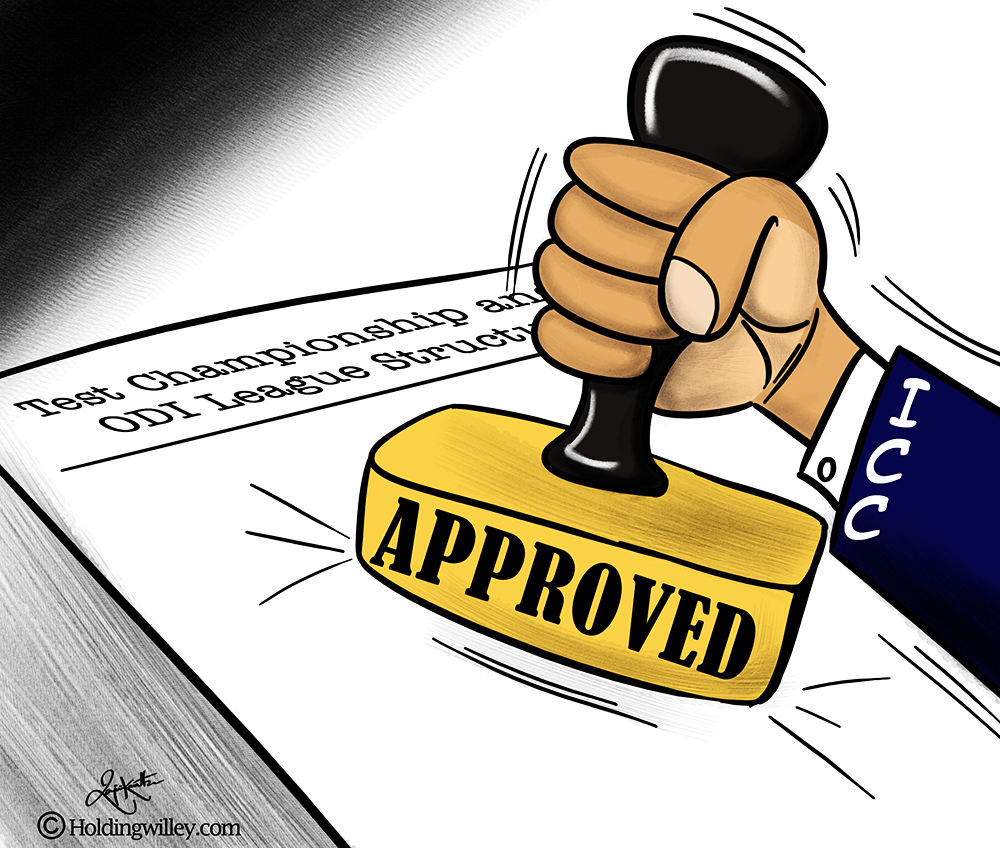 Context. It is cricket’s buzzword right now. Fans, players, officials and the administration are fed up with the meaningless bilateral cricket we’ve had for the last century and more, they want context. And it was giving context to Test and ODI cricket that was the overriding theme of the recent ICC meeting in Auckland.
Context. It is cricket’s buzzword right now. Fans, players, officials and the administration are fed up with the meaningless bilateral cricket we’ve had for the last century and more, they want context. And it was giving context to Test and ODI cricket that was the overriding theme of the recent ICC meeting in Auckland.
Leading up to the Auckland meeting, we all waited with bated breath for the announcement of a new Test Championship and an ODI League leading to World Cup qualification, which would give our beloved game much needed meaning, and of course some context, in this crazy world of ours. The new structures of the two longest formats of our games would see an end to ‘pointless’ bilateral series between competing countries that had no significance or impact on anything other than the ICC rankings system – which no one really understands anyway.
We waited for the format and formation of a Test Championship that would provide a worthy, fair, and clear winner at the end of its cycle, rather than the confusing ranking points system and awarding of the Test mace to the world’s number one ranked team. We didn’t get it. It’s been more than two decades since the idea of a Test championship was first mooted and after 20 plus years of indecision we finally got the model that was agreed upon in Auckland. A model that is flawed and wholly unsatisfying. But at least we have context.
The meeting of the game’s head honchos did little to strengthen the already minimal faith in the governing body’s ability to make fair and equitable decisions. Instead the ICC decided it preferred the one step forward, two steps back method of decision making. After the largely lauded and well received decision to grant Test and Full Member status to Ireland and Afghanistan and expand the game’s global reach, it was decided that they, along with Zimbabwe, were not worthy of the chance to compete for the Test Championship. So Test cricket will now have context, except for when any of Ireland, Afghanistan or Zimbabwe is involved – assuming that other teams find time in their busy schedules to throw them a bone.
Nor are they necessarily guaranteed to play even more ODI cricket against the game’s biggest nations to aid in their development, or in Zimbabwe’s case, resurgence and rebuilding. The new 13 team ODI league only requires teams to play against eight opponents in the three year cycle.
There is no doubt a shake-up was required for both Test and ODI cricket, but one feels short-changed by the structure of the new leagues as it is still not a fair and equitable system.
Not only are the bottom three Test nations excluded from the Test Championship, but there is also no requirement for the top nine sides to all play each other during the cycle. Starting in 2019, each team will play only six out of nine opponents over a two-year period, with three series being played at home and three away. At the end of the two years, the top two ranked sides (based on a points system for winning series and matches which is yet to be decided) will play off in a final at the home of cricket, Lord’s.
A series must constitute a minimum of two Tests, with no maximum limit – which should make the ICC’s points system interesting to say the least. While having a championship system where the best teams play off in a final sounds like a great system, this structure is so deeply flawed and can be easily manipulated. For example, what is there to stop the world’s current number one ranked side India deciding it’s three away series will be played in Sri Lanka, West Indies and Bangladesh, where conditions will suit them? Then inviting more challenging opponents like England and Australia to play them in India? Of course their opponents would have to agree to this, but big money talks and there is no doubt that financially struggling boards like those in Sri Lanka and West Indies would gleefully accept an Indian touring team and the money it brings.
Any league system where each team doesn’t play every opponent at least once is inequitable and will always leave debate around whether the overall winner is worthy. The ICC have taken a step forward by implementing a league system, but they’ve only done half the job. With the plethora of domestic T20 leagues now crowding the calendar, it is clear that players and teams have a packed schedule all year round. However, if the ICC extended the Test Championship cycle to three to four years, similar to the ODI League and World Cup, then it would perhaps allow greater time for all teams to play against each other and to include all 12 Test nations.
The ICC must be commended in its attempt to change things up and bring new life to international cricket, but the structure of the new Test and ODI leagues still leaves a lot of unanswered questions and confusion. There are positives, but it feels more like a missed opportunity.
But hey!? At least we now have context.
Fast. Lite. Innovative. Shareable. Download our HW Cricket App, for Android and iOS!